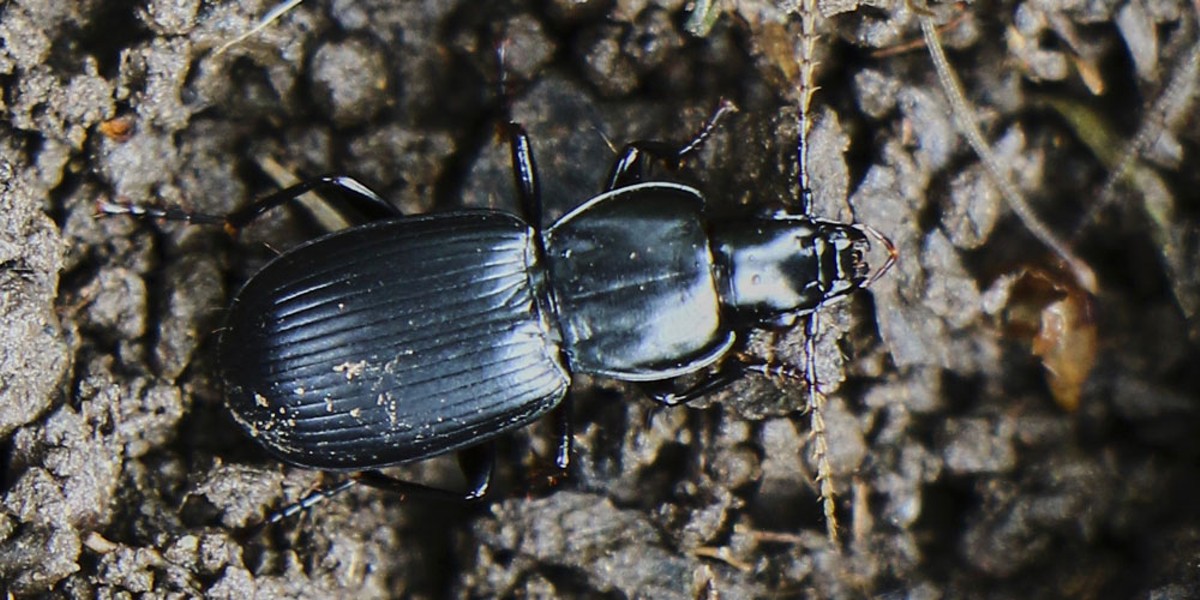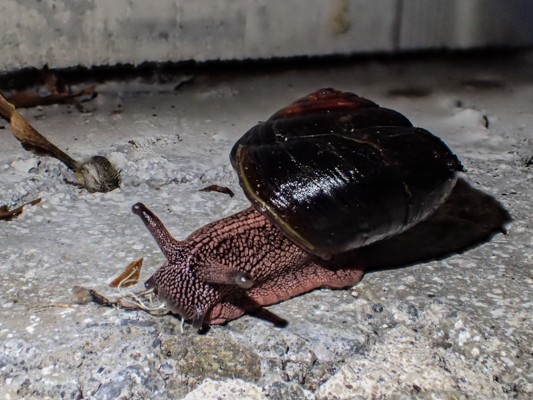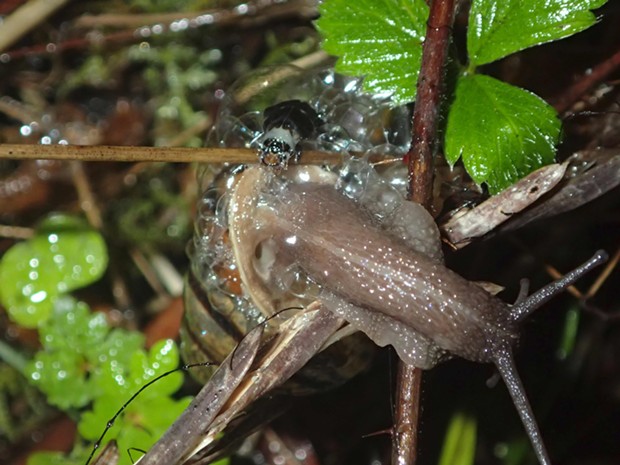HumBug Online

Photo by Anthony Westkamper

- Photo by Anthony Westkamper
- Tick on a blade of grass.
Head's up: It's tick season again. It seems they like damp weather. My archives show photos of them primarily in April to May and December to January. In the last week, I've pulled one off a dog and one off a friend who had one on her arm. Even if you haven't been outdoors where they wait in the weeds, they can hitch rides on pets that do. You can read more about them in my April 12, 2015 post here.

- Photo by Anthony Westkamper
- A Pterostichus beetle uncovered when I overturned a rock.

- Photo by Anthony Westkamper
- Pacific sideband snail portrait.
On a recent night walk, I noted quite a few Pacific sideband snails (Monadenia fidelis), the largest native land snails in our area, attaining a width of 2 inches across the widest part of their shells. This species uses “love darts,”in their mating process, a detailed explanation of which is available on Wikipedia.

- Photo by Anthony Westkamper
- Glowworm gets clotheslined in slow motion.
Comments